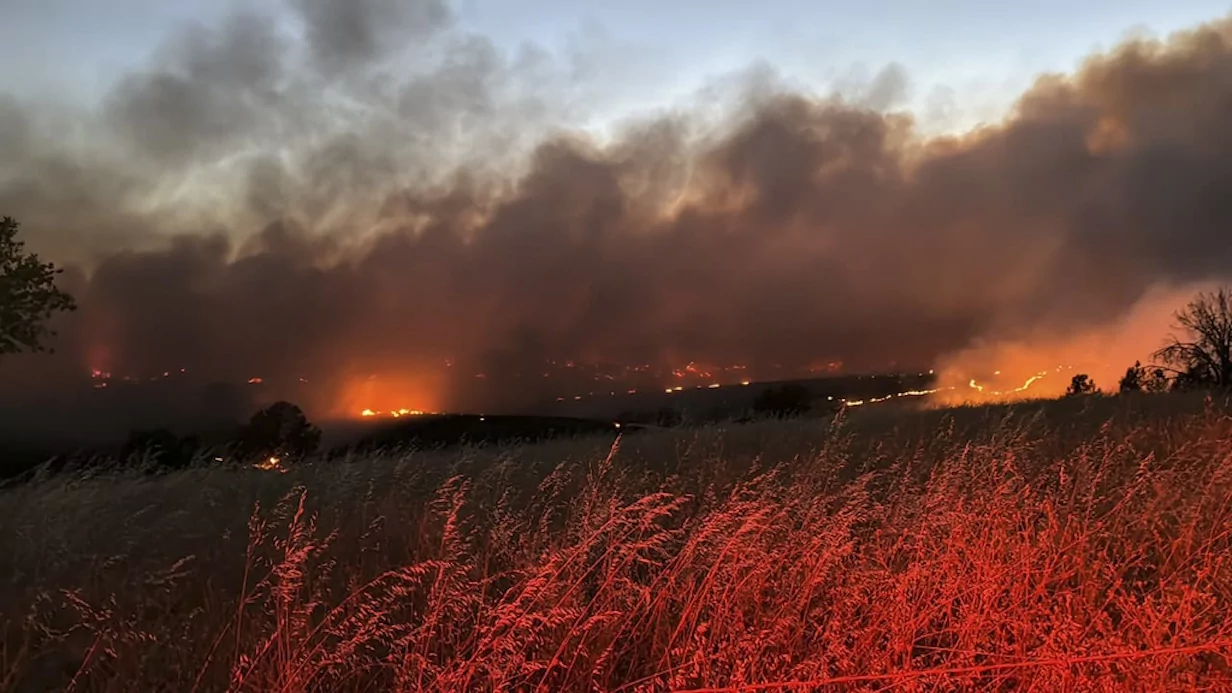

(The Center Square) – Puget Sound Energy and other utility companies in Washington state are preparing for the possibility of cutting the power in high-risk wildfire conditions.
It has been a relatively quiet start to the fire season across Washington so far, though a large fire, called the Pioneer Fire is burning about 30,000 acres along the northeast side of Lake Chelan in central Washington.
The goal of what is termed a Public Safety Power Shutdown, or PSPS, is to prevent fires from starting when conditions are ripe for blazes to occur, including high winds, tinder dry conditions, low humidity and lightning storms.
“This is very timely, as just today I learned of new wildfires in Chelan County and Franklin County, and this is the season,” Washington Utilities and Transportation Commission Chair David Danner said during a Monday hearing where three large utility providers briefed UTC members on their planning for potential PSPS events.
Ryan Murphy is Puget Sound Energy’s director of electric operations.
“At this point, we have not done a public safety power shutoff,” said Murphy, who told UTC members PSE has spent the last several months on prevention efforts in areas that have had large wildfires in recent years.
He went on to say, “We did a large amount of work – especially in March, April, May – to really ensure that these areas that have medium to high risk were in the best condition they can possibly be.”
Those areas include much of Kittitas County around Cle Elum and Ellensburg, and Skagit County around Concrete and Marblemount.
“In total the red areas on the map [areas of highest risk] total just shy of 30,000 customers,” Murphy pointed out.
He explained that when weather conditions increase fire danger, officials now have equipment that can more closely monitor power lines.
“That is where we turn on enhanced powerline settings,” said Murphy. “That effectively makes the equipment more sensitive.”
Being proactive to prevent fires could come with trade-offs.
“This has the potential for more power outages and longer power outages,” Murphy noted.
He explained that when the forecast calls for extreme fire danger, customers will be notified of any pending power shutdown.
“Our goal is to communicate with our at-risk customers two days out, so that will be our first communication when a PSPS warning will be sent,” Murphy said, adding restoration of power will be prioritized through an equity lens.
“We worked hard this year to build equity into our restoration priorities,” he said. “So vulnerable communities will be restored first.”
Avista Power Company’s Director of Electrical Engineering Vern Malensky also briefed members on planning for a PSPS event.
“A public safety shutoff is very impactful, and it’s a decision that utilities don’t take lightly,” he said. “Once we have initiated a public safety power shutoff, which I hope we never do, but once it’s initiated we are prepared to support these communities.”
Malensky said Avista is struggling with increasing wildfire premiums and reductions in insurance coverage, adding a large wildfire could make the company uninsurable.
“It is possible that there will be no insurance available from the market,” he said.
UTC members warned Malensky not to get into a discussion about potential rate hikes for customers, as UTC has upcoming rate-setting meetings scheduled.
Melissa Swenson, Pacific Power’s director of wildfire mitigation programs, also briefed UTC members on her company’s plans.
“We serve approximately 140,000 customers across nearly 2,700 square miles,” she explained.
Pacific Power’s Washington service area covers much of Walla Walla and Yakima.
“We’ve implemented some modeling to identify areas of heightened fire risk up in the Nile Valley outside of Yakima,” she said.
But like the other utilities, she said a proactive approach to shutting down power can happen in any area at any time.
“A PSPS situation can happen anywhere, so you need to be prepared,” Swenson stated.
CLICK HERE TO READ MORE FROM THE WASHINGTON EXAMINER
As reported by The Center Square, last year’s devastating Gray Fire in Medical Lake was caused by sparks from an Inland Power and Light security light mounted to a pole, according to a Department of Natural Resources investigation.
The fire burned 10,000 acres, 240 homes and displaced thousands of people.






